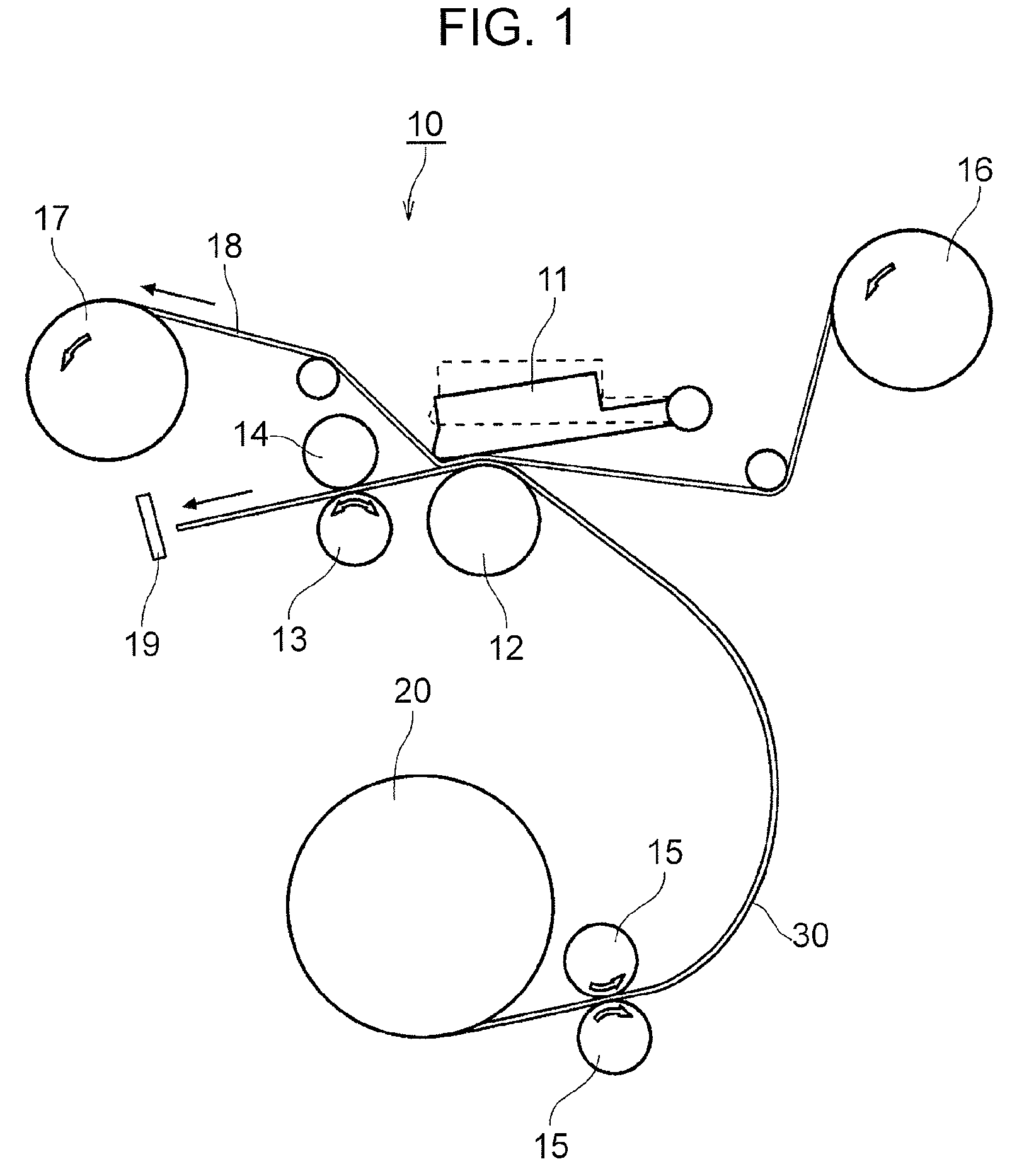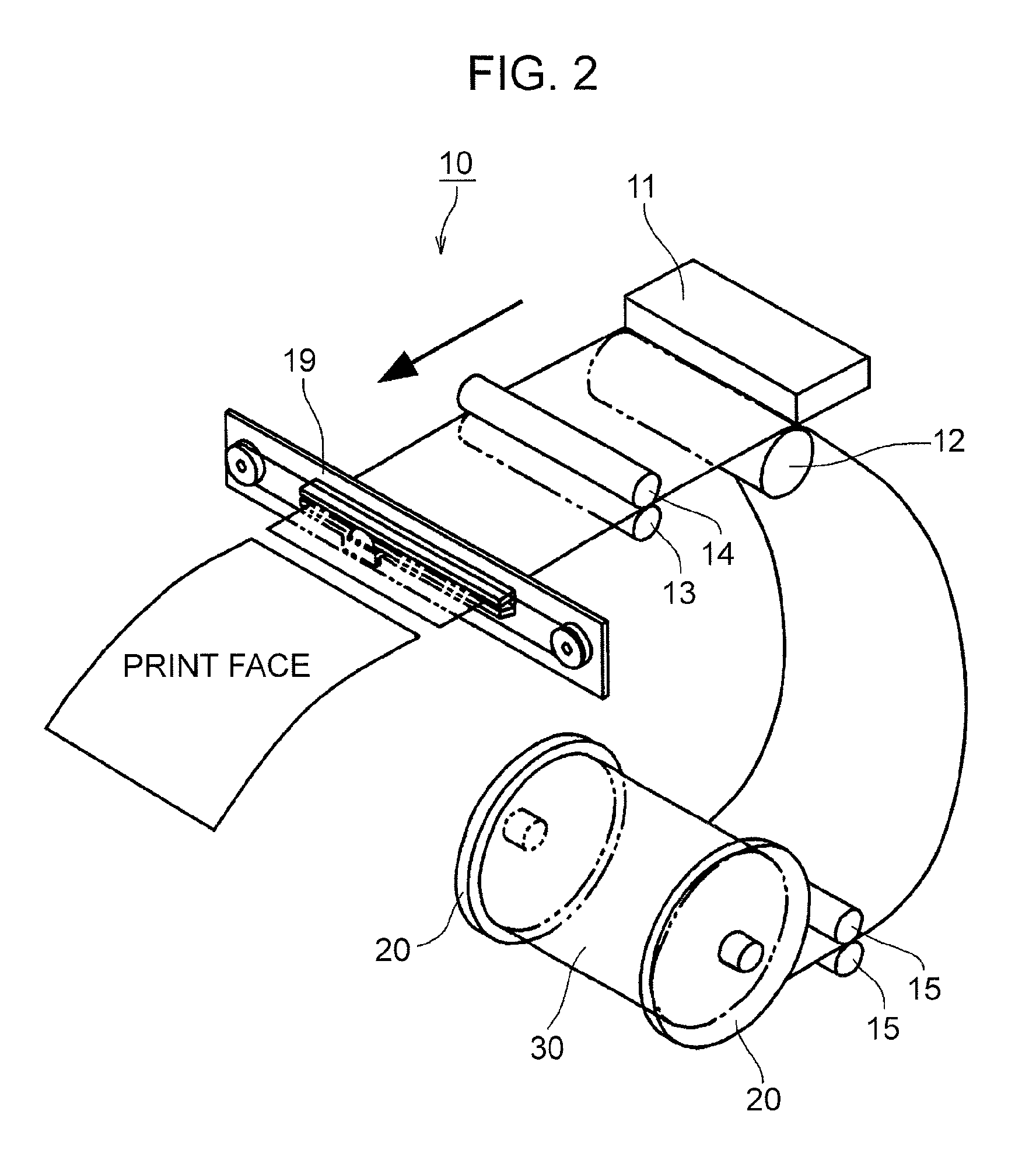Thermal head printer and printing method in thermal head printer
a printing method and printer technology, applied in the field of thermal head printers and printing methods in thermal head printers, can solve the problems of uneven density distribution, increased production costs, and increased production costs, and achieve the effects of reducing the conveying speed of the recording medium, reducing the density of the printed image, and high ra
- Summary
- Abstract
- Description
- Claims
- Application Information
AI Technical Summary
Benefits of technology
Problems solved by technology
Method used
Image
Examples
Embodiment Construction
[0032]Embodiments of the present invention will now be described with reference to the drawings.
[0033]FIG. 1 is a side view showing a relevant portion of a thermal head printer 10 according to an embodiment of the present invention.
[0034]FIG. 2 is a perspective view showing a relevant portion of the thermal head printer 10 according to this embodiment. In FIG. 2, ink ribbons provided in the thermal head printer 10 are not shown.
[0035]The thermal head printer 10 shown in FIGS. 1 and 2 is provided with a dye-sublimation thermal head 11. Roll paper 30 serving as a recording medium is loadable in the thermal head printer 10. The thermal head 11 has a plurality of linearly-arranged heating resistors serving as heating elements. The thermal head printer 10 performs a printing operation by utilizing thermal energy generated in response to electricity applied to the heating resistors so as to transfer dry ink provided on an ink ribbon 18 shown in FIG. 1 onto the roll paper 30. If the therma...
PUM
 Login to View More
Login to View More Abstract
Description
Claims
Application Information
 Login to View More
Login to View More - R&D
- Intellectual Property
- Life Sciences
- Materials
- Tech Scout
- Unparalleled Data Quality
- Higher Quality Content
- 60% Fewer Hallucinations
Browse by: Latest US Patents, China's latest patents, Technical Efficacy Thesaurus, Application Domain, Technology Topic, Popular Technical Reports.
© 2025 PatSnap. All rights reserved.Legal|Privacy policy|Modern Slavery Act Transparency Statement|Sitemap|About US| Contact US: help@patsnap.com



